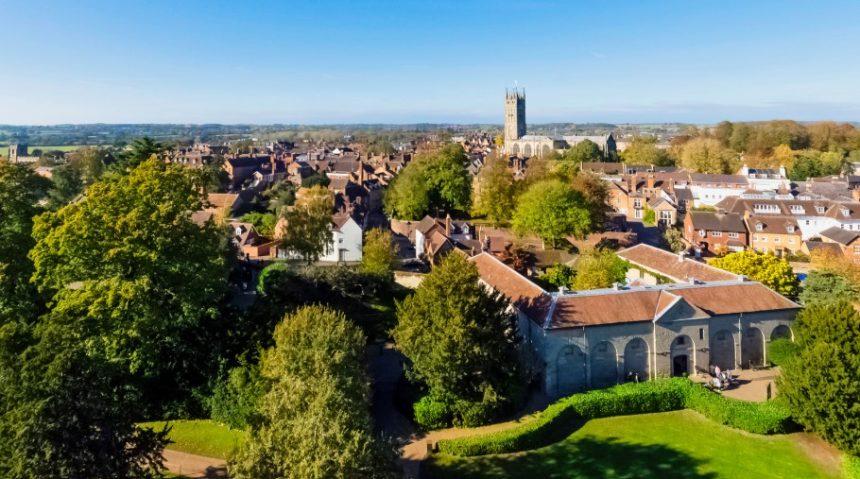|
Getting your Trinity Audio player ready...
|
Have you ever wondered how towns across England are defined by their counties and why that matters? When it comes to identity, heritage, and governance, understanding a town’s county affiliation reveals much more than just its location. One such place with a rich history and a growing modern presence is Nuneaton.
Positioned in the heart of England, this town has evolved through centuries of industrial growth, cultural significance, and community development.
Its geographical setting, administrative role, and connections to neighbouring areas make it a vital part of the wider Midlands region. But which county does it belong to, and how does that shape its place in the UK’s social and political landscape?
In this article, we explore everything you need to know about Nuneaton’s location, character, and importance.
Where Exactly Is Nuneaton Located in the UK?
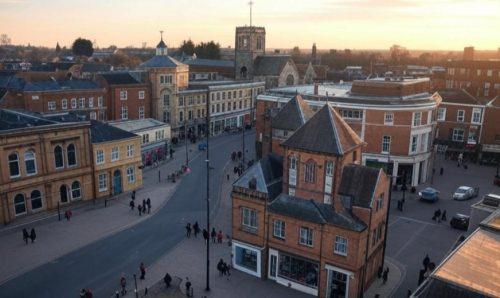
Nuneaton is located in the central part of England and falls within the West Midlands region. Geographically, it lies around nine miles north of Coventry and approximately twenty miles east of Birmingham.
The town sits on the River Anker and is well-connected via road and rail networks, making it a strategic and accessible location within the Midlands.
Nuneaton’s central position has long made it an attractive settlement for trade, transport, and industry. It acts as a gateway between urban cities and the rural heartlands of Warwickshire, allowing for both economic integration and a strong local identity.
The town’s location close to the borders of Leicestershire and Staffordshire has historically influenced its role as a commercial and logistical hub.
Nuneaton serves as the administrative centre of the Borough of Nuneaton and Bedworth and continues to expand as one of the most prominent towns in the region, both in terms of population and infrastructure.
What County Is Nuneaton In Today?
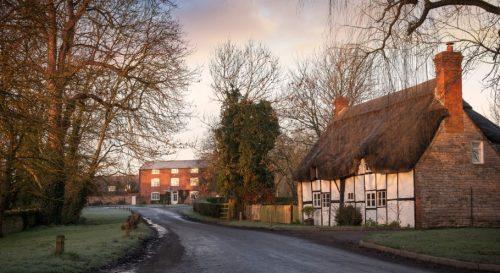
Nuneaton is situated in Warwickshire, one of England’s historic and administrative counties. This has been the case for centuries, and despite several boundary and governance changes over the years in surrounding areas, Nuneaton has remained consistently within Warwickshire.
Warwickshire is a central English county known for its mix of rural beauty, market towns, and rich industrial past. Within Warwickshire, Nuneaton stands as the largest town by population, serving as a critical economic, cultural, and residential hub.
Its inclusion in Warwickshire connects it to a wider network of towns such as Stratford-upon-Avon, Warwick, Rugby, and Leamington Spa.
While some nearby areas like Coventry were incorporated into the West Midlands metropolitan county during the local government reorganisation in 1974, Nuneaton maintained its administrative and ceremonial ties to Warwickshire.
The town also contributes significantly to the identity and economy of the county, continuing to grow and modernise while preserving its traditional role in the region’s framework.
Where Can You Find Nuneaton on the Map of the UK?
Nuneaton can be located in the central part of the UK, positioned north of Coventry and south-west of Leicester. On a detailed UK map, the town sits within Warwickshire and is clearly marked due to its regional prominence.
It is intersected by important transportation lines, including major roads such as the A5 and M6, and by rail routes connecting it to London, Birmingham, and the north of England. Nuneaton’s proximity to Coventry, Birmingham, and Hinckley makes it a key connector within the Midlands’ commuter network.
Additionally, its location near the River Anker provides a natural landmark on regional maps. The town’s centrality within England makes it ideal for businesses and residents alike, offering both accessibility and local amenities.
As such, Nuneaton holds strategic value both geographically and economically in the UK’s urban hierarchy.
Is Nuneaton a Town, Borough, or District?
Nuneaton is a town, but it forms part of a broader administrative unit known as the Borough of Nuneaton and Bedworth. This borough, established in 1974, brings together Nuneaton and the smaller town of Bedworth under a single local government authority, Nuneaton and Bedworth Borough Council.
As a borough, the area operates its own local services such as planning, waste collection, housing, and community welfare initiatives. While Nuneaton is the larger and more economically prominent of the two towns, the borough functions as a unified administrative area.
This local governance structure gives Nuneaton greater autonomy in handling local affairs, even though many overarching services, such as education and highways, are managed at the Warwickshire County Council level.
The town’s classification as part of a borough gives it enhanced representation and influence, allowing for effective coordination between regional and municipal bodies. Despite its administrative ties, Nuneaton maintains a distinct town identity grounded in its history and culture.
What Are the Key Geographical Details That Define Nuneaton?
Nuneaton’s geography plays a major role in shaping its identity within Warwickshire and the broader West Midlands. Its location, transport access, administrative role, and physical characteristics all contribute to its importance in the region.
Key Geographical Details of Nuneaton:
| Category | Details |
| Coordinates | 52.523°N, 1.468°W |
| Sovereign State | United Kingdom |
| Country | England |
| Region | West Midlands |
| County | Warwickshire |
| District | Nuneaton and Bedworth |
| Founded | Around the 12th century |
| Post Town | Nuneaton |
| Postcode Districts | CV10, CV11 |
| Dialling Code | 024 |
| Police | Warwickshire Police |
| Fire Services | Warwickshire Fire and Rescue |
| Ambulance Service | West Midlands Ambulance Service |
| UK Parliament Constituency | Nuneaton |
| Main Railway Station | Nuneaton Railway Station |
| Area | Approx. 31 square miles (79 sq km) |
These geographical elements place Nuneaton at a critical intersection of heritage, accessibility, and administrative significance, making it one of Warwickshire’s most strategically situated and historically grounded towns.
Has Nuneaton Always Been Part of Warwickshire?
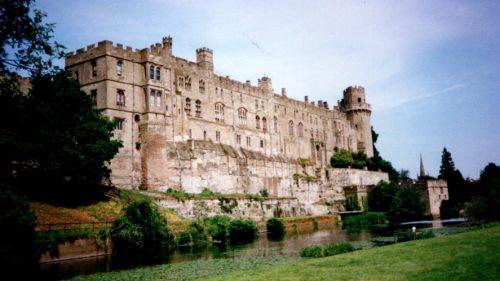
Yes, Nuneaton has always been historically part of Warwickshire. Unlike nearby Coventry, which was reassigned to the West Midlands metropolitan county in the 1970s, Nuneaton retained its place within Warwickshire both administratively and ceremonially. The town’s identity, governance, and historical development have always been linked to Warwickshire.
Since medieval times, Nuneaton has contributed to the economic and cultural fabric of the county. Its significance increased during the Industrial Revolution, and the expansion of the town was accommodated within Warwickshire’s local government framework.
Even with evolving governance models and the creation of new metropolitan counties, Nuneaton remained unchanged in its county affiliation.
Today, this continuity enhances the town’s sense of identity, connecting its residents to a shared history with other Warwickshire towns like Warwick, Stratford-upon-Avon, and Rugby.
What Makes Nuneaton Notable in Warwickshire?
Nuneaton holds a prominent place in Warwickshire for both historical and cultural reasons. It is the largest town in the county, offering a mix of industrial heritage and literary significance.
One of its most famous associations is with the novelist George Eliot, born Mary Ann Evans, who spent her early years in Nuneaton. Her novels, many of which are inspired by the landscapes and people of the Midlands, have brought lasting cultural prestige to the town.
In terms of industrial development, Nuneaton’s past was shaped by coal mining and textile manufacturing, both of which contributed significantly to Warwickshire’s economy.
The town also benefited from excellent railway connections during the Industrial Revolution, making it a hub for trade and logistics.
These historical legacies continue to influence Nuneaton’s development today, positioning it as a vital contributor to the economic and cultural identity of Warwickshire.
How Is Nuneaton Governed Today?
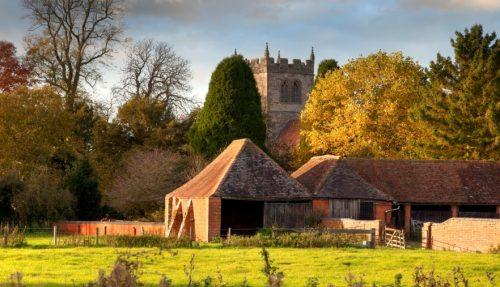
Nuneaton operates under a two-tier local government structure. At the borough level, it is administered by Nuneaton and Bedworth Borough Council, which manages local services such as housing, planning, waste management, and leisure facilities.
This council covers both Nuneaton and its neighbour, Bedworth, as a single administrative area. At the county level, broader services like education, highways, social care, and libraries are handled by Warwickshire County Council.
In terms of political representation, Nuneaton is part of the Nuneaton parliamentary constituency, which elects a Member of Parliament (MP) to represent the area in Westminster.
This structure ensures that both local and regional issues receive appropriate attention and governance. The town also has neighbourhood forums and community initiatives that allow residents to participate in decision-making and civic engagement.
Overall, the governance system balances regional oversight with local responsiveness, helping Nuneaton address both community needs and long-term development goals.
What Is the Population of Nuneaton in 2025?
Nuneaton and Bedworth continue to experience steady population growth, reflecting the area’s development and increasing importance as a residential and economic centre in Warwickshire. Below are the latest figures and demographic insights for 2025:
| Population Statistic | Figure |
| Total Population (Nuneaton and Bedworth) | 134,300 |
| Population Density (per sq mile) | 4,406 |
| Female Population Share | 50.9% |
| Student Population | 5,000 |
| Population Growth Since 1981 | +20,400 |
| Population Increase in the Last Year | +3,900 |
This growth highlights the borough’s appeal as a commuter town close to Birmingham and Coventry, supported by infrastructure improvements and regeneration efforts.
As demand for housing, education, and services increases, Nuneaton’s role as a dynamic and expanding urban centre within Warwickshire is further reinforced.
What Role Does Nuneaton Play in Warwickshire’s Economy?

Nuneaton serves as one of Warwickshire’s most economically active towns, with a varied business landscape and a growing workforce. The town contributes significantly to regional employment, business development, and retail activity. Below is a snapshot of its economic profile:
| Economic Indicator | Figure/Detail |
| Total Number of Businesses | 3,685 |
| Micro-Business Share (fewer than 10 employees) | 88.7% |
| Small Businesses | 9.5% |
| Medium Businesses | 1.4% |
| Large Businesses | 0.4% |
| Key Sectors | Health & Social Work, Retail, Manufacturing |
| Average Salary | £29,203 per year |
| Salary Compared to National Average | 12.52% lower |
| Primary Retail Hub | Ropewalk Shopping Centre |
| Ongoing Development | Town centre regeneration, business park expansion |
Nuneaton’s economy is shaped by both local entrepreneurship and larger regional employers. The strong public sector presence, especially in healthcare and education, supports a stable employment base.
Regeneration projects are enhancing commercial infrastructure, while retail and logistics continue to draw investment and talent into the area.
Nuneaton’s accessible location and workforce strength make it a key economic contributor within Warwickshire and the wider Midlands region.
What Are the Top Attractions in and Around Nuneaton?
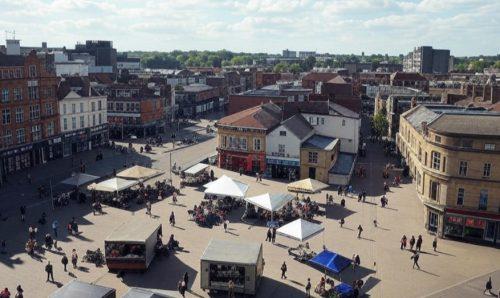
Nuneaton is home to a variety of cultural, historical, and natural attractions that highlight the town’s heritage and character. Below are some of the most notable sites to visit in and around the area:
1. Nuneaton Museum & Art Gallery
Located in the heart of Riversley Park, this museum offers an engaging overview of local history, art, and culture. It features permanent exhibitions about the town’s development and a dedicated gallery exploring the life and work of George Eliot. The museum regularly hosts temporary exhibitions, workshops, and family-friendly events.
2. Riversley Park
Situated alongside the River Anker, Riversley Park is a popular green space ideal for relaxation and recreation. It includes children’s play areas, formal gardens, and walking paths. The park also hosts public events and is conveniently located next to the museum, making it a central spot for leisure in the town.
3. Arbury Hall
Arbury Hall is a stately home known for its Gothic Revival architecture and scenic grounds. The hall has strong connections to George Eliot, whose father worked on the estate. Visitors can explore its historic interiors, landscaped gardens, and learn more about its literary and architectural significance.
4. Hartshill Hayes Country Park
Just a short drive from Nuneaton, Hartshill Hayes offers expansive woodland trails, picnic spots, and panoramic views over the Warwickshire countryside. It is especially popular with walkers, bird watchers, and families looking to enjoy nature. The site also includes a visitor centre and seasonal activities.
5. George Eliot Heritage Trail
This self-guided walking trail takes visitors through key locations in Nuneaton that are associated with the life and works of George Eliot. The trail includes her childhood home, places of worship, and areas that inspired settings in her novels. It provides a deeper connection to one of England’s most influential writers.
6. Bosworth Battlefield Heritage Centre
Located just outside of Nuneaton, this historical site marks the location of the Battle of Bosworth Field in 1485, a decisive moment in English history. The centre includes a museum, interactive exhibits, and guided walks across the battlefield. It is an essential destination for those interested in the Wars of the Roses and Tudor history.
These attractions not only reflect Nuneaton’s deep historical and cultural roots but also showcase the town’s continued relevance as a destination for education, leisure, and heritage tourism in the heart of Warwickshire.
What Are the Nearest Towns and Villages to Nuneaton?
Nuneaton is surrounded by a network of towns and villages that share strong economic, residential, and cultural ties. These neighbouring areas contribute to the town’s regional significance and offer varied lifestyle choices for residents and visitors.
1. Bedworth
Located just 3 miles south of Nuneaton, Bedworth forms part of the same borough. Historically linked by the coal mining industry, the town offers a strong sense of community and shared governance.
It hosts several parks, schools, and shopping areas. Bedworth also has a central railway station with connections to Coventry and Nuneaton. Its close integration makes it almost an extension of Nuneaton.
2. Hinckley
Hinckley lies around 6 miles northeast in Leicestershire and is known for its industrial roots, especially in hosiery and manufacturing. Today, it is a growing commercial centre with strong retail offerings, including The Crescent shopping complex.
The town has excellent road links via the A5 and M69. Hinckley also provides rail access to Birmingham and Leicester. It complements Nuneaton with job and business opportunities.
3. Atherstone
Situated roughly 7 miles to the northwest, Atherstone is a historic market town with roots dating back to Roman times. It features traditional high streets, weekly markets, and heritage architecture.
Known for its peaceful, semi-rural setting, Atherstone offers a slower pace of life. The town remains active with local events and community festivals. It is easily accessible via the A5 and West Coast Main Line.
4. Bulkington
Bulkington is a large village southeast of Nuneaton, known for its green spaces and quiet residential areas. It retains a rural charm while offering good connectivity to Coventry and Nuneaton.
The village is popular with families and retirees due to its schools and community facilities. Bulkington has a strong local identity rooted in agriculture. It continues to attract new housing developments due to its location.
5. Hartshill
Hartshill lies to the west of Nuneaton and is best known for its proximity to Hartshill Hayes Country Park. The village combines natural beauty with local amenities like shops, schools, and medical centres.
Its woodland setting makes it attractive for walkers and outdoor enthusiasts. Hartshill offers a close-knit village feel with good road links. It serves as a gateway to the rural parts of north Warwickshire.
6. Burbage
Burbage is a desirable village located near Hinckley, approximately 7 miles from Nuneaton. It has expanded in recent years due to its appeal as a commuter area.
The village has well-rated schools, pubs, and green spaces. Despite its growth, Burbage maintains a peaceful, residential atmosphere. Its proximity to the A5 and M69 ensures quick access to Nuneaton and beyond.
These towns and villages create a dynamic and diverse environment around Nuneaton, offering choices in community, lifestyle, and connectivity.
What Cities Are Close to Nuneaton?
Nuneaton benefits from its central location in England, offering excellent access to several nearby cities. These urban centres contribute to the town’s economic growth, transport network, and regional influence.
1. Coventry
Just 9 miles to the south, Coventry is the nearest city to Nuneaton. It is a major centre for higher education, automotive engineering, and the arts. Coventry University attracts students from across the globe. The city also hosts cultural festivals and historic landmarks such as Coventry Cathedral. Direct train and bus services connect it to Nuneaton in under 20 minutes.
2. Birmingham
Birmingham is around 20 miles west of Nuneaton and serves as the UK’s second-largest city. It is a national hub for finance, manufacturing, retail, and education. The city offers world-class amenities, including shopping at the Bullring and international events at the NEC. Birmingham is accessible by regular train services and the M6 motorway. Its influence extends across the entire West Midlands region.
3. Leicester
Situated approximately 20 miles to the east, Leicester is a historic and multicultural city. It is home to two major universities and the renowned King Richard III Visitor Centre.
The city supports a thriving business sector in textiles, engineering, and food production. Leicester also has a strong sports scene, including Premier League football and rugby. Its connectivity with Nuneaton makes it a common commuter destination.
4. Derby
Located 40 miles to the north, Derby is an industrial city known for its railway heritage and advanced manufacturing. It hosts the headquarters of companies like Rolls-Royce and Bombardier.
Derby also has a compact but lively city centre with shopping, museums, and restaurants. Though a bit farther, it is easily reached by road or train. The city offers both employment and educational prospects.
5. Nottingham
Nottingham is about 45 miles northeast of Nuneaton and is one of the region’s cultural and academic hubs. It’s widely known for the legend of Robin Hood and has two major universities.
The city boasts a vibrant nightlife, creative industries, and high-tech business parks. Strong rail links make commuting to Nottingham from Nuneaton convenient. It attracts professionals, students, and entrepreneurs alike.
6. Wolverhampton
Wolverhampton, approximately 30 miles west of Nuneaton, is a city with a strong manufacturing base and a growing digital sector. It has undergone major urban redevelopment, improving its infrastructure and housing stock.
The city also has excellent rail links and sits near the M6, making travel to Nuneaton efficient. Wolverhampton supports a mix of traditional industries and modern services.
These nearby cities expand Nuneaton’s reach and offer its residents access to a broad range of employment, education, and cultural opportunities across the Midlands.
How Well Connected Is Nuneaton?
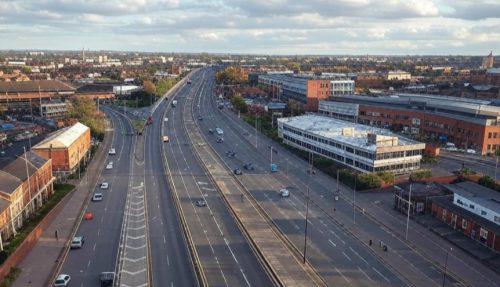
Nuneaton is a well-connected town with a highly developed transport infrastructure. It sits near key roadways including the M6, A5, A444, and A47, allowing direct access to major cities and nearby towns. This makes it an ideal location for both residents and businesses seeking regional mobility.
The Nuneaton railway station is one of the busiest in Warwickshire, with services provided by Avanti West Coast, West Midlands Trains, and Cross Country. Trains from Nuneaton offer direct routes to London Euston, Birmingham New Street, Coventry, and Leicester, making it a strategic commuter hub.
Public transport within the town includes a reliable bus network operated by Stagecoach and other local providers, serving urban and rural communities across the borough.
In addition, Birmingham Airport, one of the UK’s major air travel hubs, is just a 30-minute drive or train journey away. These combined transport options strengthen Nuneaton’s appeal for professionals, students, and families alike.
Conclusion
Understanding that Nuneaton is located in Warwickshire offers a meaningful insight into the town’s history, identity, and future development. As the largest town in the county, it plays a central role in shaping regional policies, economic initiatives, and cultural heritage.
Warwickshire itself is known for its historical richness, and Nuneaton contributes to this legacy through its industrial roots and literary significance.
The town’s sustained population growth, connectivity, and local governance position it as a town that is evolving to meet modern demands while retaining its heritage.
Whether you are a resident, business owner, investor, or visitor, recognising Nuneaton’s county affiliation helps to better understand its role within the wider Midlands region.
With ongoing regeneration efforts and infrastructure development, Nuneaton is not only a key town in Warwickshire but also an emerging destination of regional significance in the UK.
FAQs
What is Nuneaton most known for?
Nuneaton is best known as the birthplace of novelist George Eliot and for its industrial past rooted in coal mining and textiles.
Is Nuneaton part of the West Midlands county?
No, Nuneaton is part of the West Midlands region but is administratively within the county of Warwickshire.
How far is Nuneaton from Birmingham?
Nuneaton is approximately 20 miles east of Birmingham and is easily accessible by road and train.
What is the property market like in Nuneaton?
The average property price in Nuneaton and Bedworth is £230,618, which is below the national average and offers good value.
What kind of jobs are available in Nuneaton?
Key employment sectors include health and social care, retail, education, logistics, and light manufacturing.
Are there any universities in Nuneaton?
There are no universities in Nuneaton itself, but nearby Coventry and Warwick offer higher education options.
What is the student population in Nuneaton?
Around 5,000 students live in the Nuneaton and Bedworth area, contributing to the town’s diversity and economy.


